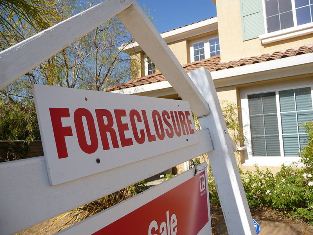 WASHINGTON (AP) -- Rising foreclosures are weighing on the U.S. housing market, reducing prices and keeping new-home sales weak.
WASHINGTON (AP) -- Rising foreclosures are weighing on the U.S. housing market, reducing prices and keeping new-home sales weak.
Foreclosed homes are usually sold at steep discounts, thereby lowering average prices. And by expanding the supply of low-priced previously occupied homes, foreclosures tend to limit demand for new homes.
Some economists expect foreclosures to keep prices under pressure this year, even though they think sales of previously occupied homes will rise.
Banks are stepping up foreclosures in about half the states. The increase comes after state officials settled a dispute in February with five of the biggest mortgage lenders over foreclosure abuses.
"Foreclosures, excess supply and weak demand will drive home prices ... down at least another 5 percent," said Patrick Newport, an economist at IHS Global Insight.
The Standard & Poor's/Case-Shiller home-price index, released Tuesday, showed that prices dropped in February from January in 16 of the 20 cities it tracks. That's the sixth straight decline.
And new-home sales fell sharply in March, the Commerce Department said. Sales dropped 7.1 percent to a seasonally adjusted annual rate of 328,000.
Still, there were good signs in both reports. New home sales were revised sharply upward in February to show a 7.3 percent gain, much larger than initially reported. That suggests that warm winter weather might have pulled some sales into February that normally would have occurred in March.
As a result, new-home sales rose 7.5 percent in March compared with a year earlier.
And the pace of decline in the S&P/Case-Shiller index slowed. Some economists said that suggests prices are stabilizing. The index fell 3.5 percent over the 12 months that ended in February. That's the smallest annual drop in a year.
Purchases of previously occupied homes, meanwhile, rose in January and February, making this winter the best for sales in five years. Such purchases dropped back in March, to a seasonally adjusted annual rate of 4.48 million.
Builders are laying plans to construct more homes in 2012 than at any other point in past 3 1/2 years. More jobs and a better outlook among buyers could also make 2012 the first year since 2008 that construction added to the U.S. economy.
Stan Humphries, chief economist at the real estate website Zillow, said it's normal in the early stages of a housing recovery for prices to keep sliding even as sales start to tick up.
"This is all part and parcel of the bottoming process," he said.
The national numbers mask regional differences. Foreclosures are rising sharply in 26 states in which courts oversee the process. A report last month by RealtyTrac showed that bank repossessions in February dipped slightly nationwide. But they soared in Massachusetts, North Carolina, Florida and Georgia, among other states.
Foreclosures are a big reason prices are falling fast in Atlanta, where the average price sank 17.3 percent in February compared with a year earlier. That's the biggest annual drop in the history of the Case-Shiller index for any city.
Yelena Shulyatyeva, an economist at BNP Paribas, said she expects 1 million homes to be foreclosed this year, up from 800,000 in 2011.
Mark Vitner, an economist at Wells Fargo, said there's also a divide between so-called "distressed" home prices and the rest of the market. Distressed homes include foreclosures and "short sales." Short sales occur when lenders allow homes to be sold for less than what's owed on the mortgage.
Home-price indexes that exclude distressed properties suggest that prices are inching up.
For non-distressed properties, "there's really some intense competition out there," Vitner said. "A lot of houses are getting multiple bids."
Humphries estimates that foreclosed homes made up about 20 percent of February sales. That figure has been 15 percent to 20 percent since late 2008, he said. In a healthy market, it's usually less than 5 percent.
The Case-Shiller index showed that prices rose in Phoenix, San Diego and Miami. They were unchanged in Dallas.
Phoenix and Miami are also seeing heavy foreclosures but are benefiting from intense interest among investors.
The average home price in Phoenix has risen for five straight months. The average in Miami rose in February, too.
Nationwide, the steady price declines have brought the Case-Shiller index to its late 2002 level. Home prices have fallen 35 percent since the housing bust.
The S&P/Case-Shiller monthly index covers half of all U.S. homes. It measures prices compared with those in January 2000 and creates a three-month moving average. The February figures are the latest available.
© 2012 The Associated Press. All rights reserved. This material may not be published, broadcast, rewritten or redistributed. Learn more about our Privacy Policy and Terms of Use.
- Home
- News
- Opinion
- Entertainment
- Classified
- About Us
 MLK Breakfast
MLK Breakfast- Community
- Foundation
- Obituaries
- Donate
11-24-2024 2:50 am • PDX and SEA Weather














































































































































































































































































































